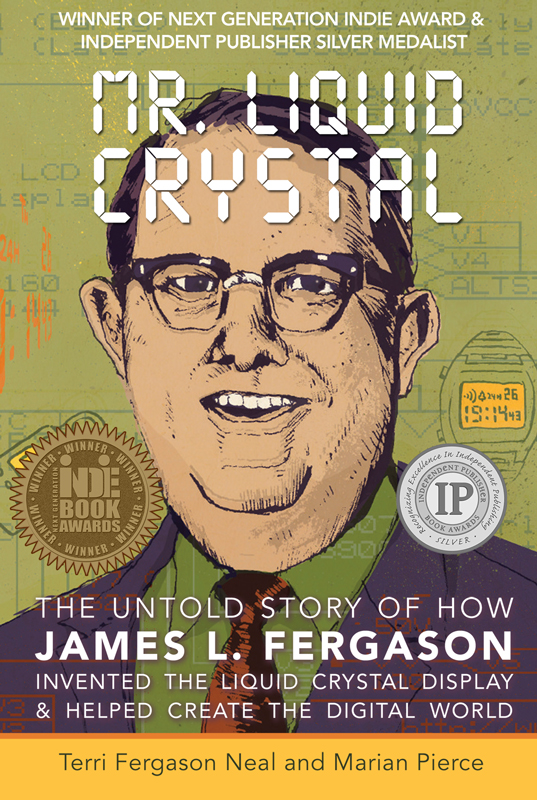Mr. Liquid Crystal: The Untold Story of How James L. Fergason Invented the Liquid Crystal Display & Helped Create the Digital World
By Terri Fergason Neal and Marian Pierce
Awards
Beverly Hills Book Awards: Winner – Technology
Independent Publisher Book Award (IPPY): Winner – Science
Next Generation Indie Book Awards: Silver Medal – Memoirs (Historical/Legacy/Career)
USA Best Book Award: Finalist – Science
Amazon #1 Best Seller
Amazon #1 New Release
James Lee Fergason changed your life, though you probably did not know it. He invented the twisted nematic liquid crystal display (TN-LCD), ubiquitously used today in the screens of smart phones, calculators, iPods, flat-screen TVs, digital watches, laptop and tablet computers, medical equipment, and many other devices. Jim was one of the America’s most prolific inventors, holding more than 150 U.S. patents and over 500 foreign patents. The examiners at the U.S. Patent and Trademark Office reverentially called him “Mr. Liquid Crystal.”
This book recounts the amazing story of Jim’s discovery of liquid crystals and invention of LCDs, a scientific journey that began in the late 1950s and lasted decades until his death in 2008. From the day Jim noticed how liquid crystals formed a brightly colored iridescent liquid, he was immediately taken by their possibilities and devoted his entire career to creating practical applications for this new method of optical display.
Mr. Liquid Crystal explains in detail the science of liquid crystals, the false starts and “Aha” moments that Jim and his team went through to build usable and marketable LCDs, and the legal challenges Jim found himself facing. Over the course of his 50+ year career, Jim’s patents and inventions were challenged twice by companies claiming they invented and owned his work. In both cases, Jim won. For his lifetime of work, Jim Fergason was inducted into the National Inventors Hall of Fame in 1998.
Mr. Liquid Crystal is a book that will fascinate scientists, inventors and everyone with a dream.
“Exceptionally well written, organized and presented, Mr. Liquid Crystal: The Untold Story of How James L. Fergason Invented the Liquid Crystal Display & Helped Create the Digital World is a consistently compelling read from beginning to end and is unreservedly and enthusiastically recommended for community, college, and university library collections. For the personal reading lists of students and non-specialist general readers with an interest in the subjects of scientific discovery, crystallography, contemporary patents and inventions.” —Midwest Book Review





